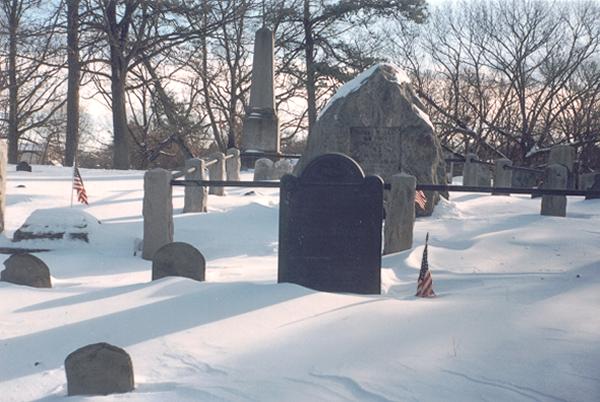Little Neck Cemetery
Little Neck Cemetery is a very picturesque, secluded graveyard located on a small, high, wooded neck of land near the head of Bullock Cove. Its beauty is largely due to its romantic waterside setting and careful maintenance of its grounds rather than deliberate attempts at artful layout or landscaping. Established in 1655 by the town of Rehoboth, Massachusetts, as a common burial ground for the early settlers of Wannamoisett (the present-day Riverside area of East Providence with Barrington, Rhode Island, and parts of Warren, Rhode Island, and Swansea, Massachusetts). The cemetery has been enlarged and currently encompasses an area of about 12.3 Acres.
Little Neck Cemetery is a historical and cultural resource of great importance. It contains the graves of individuals who have played a prominent role in the history of East Providence and other American communities. The oldest recorded burial is that of John Brown, Jr. (died 1662), son of the man who purchased Wannamoisett from the Wampanoag Indians. The grave of Elizabeth Tilley Howland (died 1687) is also here. Howland was a passenger on the ship Mayflower and was one of the original settlers of the Plymouth Colony. She died at the Swansea farm of her daughter and son-in-law and was buried nearby at Little Neck. Today her grave is marked by a finely carved slate marker erected in 1946 by the Howland Family Association. The most famous person interred at Little Neck, however, is Captain Thomas Willett (died 1674). Willett, son-in-law of John Brown of Wannamoisett, settled in what is now East Providence in a house that stood on Willett Avenue (now the site of the Willett Arms Apartments). He is noted for serving as first English mayor of New York. The Willett plot, surrounded by a stone-post and iron rail fence, is now marked by a large boulder placed by the City Club of New York and also contains the original stones marking the graves of Willett and his wife, Mary, who died in 1669.
